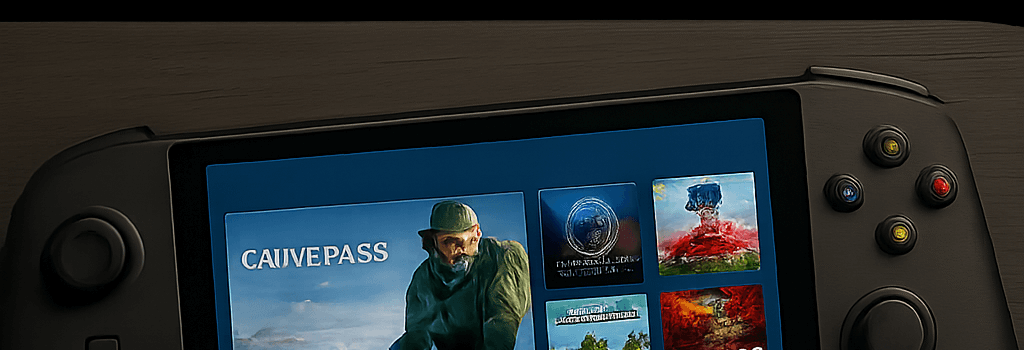Xbox Handheld UI Coming to Windows PCs in Early 2026

Better late than never? Microsoft has confirmed that its full-screen, Xbox-branded handheld user interface—first previewed on the Asus ROG Xbox Ally—will be rolling out to all compatible Windows PCs starting in early 2026. This marks a major expansion of the company’s efforts to deliver a console-like gaming experience on traditional Windows hardware.
Background and Evolution of Windows Handheld Mode
Microsoft’s foray into a handheld-optimized UI dates back to an internal proof-of-concept presentation at a late-2022 hackathon. In that slide deck, engineers proposed a “Windows Handheld Mode” shell featuring:
- Tile-based gamepad navigation reminiscent of console dashboards
- Optimized touch targets and enhanced visibility for 7- to 10-inch screens
- Streamlined controller support beyond apps that natively recognize XInput
Until now, these ideas only surfaced in prototypes and fan leaks. With the ROG Xbox Ally partnership, Microsoft validated many of those concepts on real hardware—and is now preparing a polished build for all Windows 11 and 12 PCs.
Key Features and UI Design
The new full-screen Xbox interface replaces the standard desktop shell, offering:
- Dedicated Game Library: A Switch-style grid of installed and cloud-streamed titles, integrated with Xbox Game Pass and Steam.
- Performance Dashboard: Real-time telemetry on CPU, GPU, and memory usage powered by DirectX 12 Ultimate performance counters.
- Quick Settings Overlay: Rapid access to volume, brightness, network, and game profile toggles without returning to desktop.
- Power and Thermal Modes: Presets that leverage Dynamic Refresh Rate, per-core CPU scaling, and GPU boost management for up to 30% improved battery life.
“By stripping out the traditional Windows shell, we save up to 2.5 GB of RAM and reduce idle power draw by roughly 15 percent,” says a Microsoft spokesperson.
Performance Benchmarks & Resource Utilization
Early benchmarks on the ROG Xbox Ally running the new UI illustrate significant gains:
- System RAM Usage: 3.2 GB vs. 5.8 GB on classic desktop shell
- Idle Power Draw: 4.5 W vs. 5.2 W at 60 Hz
- Average FPS in Metro Exodus: +8% at 1080p High settings thanks to lower background overhead
These optimizations rely on lightweight UWP components and a WinUI 3-based XAML front end to ensure fluid animations at 60 FPS on handheld CPUs like the AMD Ryzen Z1 series.
Developer Integration & APIs
Microsoft is exposing a new Game Shell API in the Windows SDK to help developers adapt their games and UWP apps for the full-screen UI. Key capabilities include:
- Adaptive Layouts: Automatic scaling of UI elements based on resolution and aspect ratio using WinUI responsive triggers.
- Controller Events: Low-latency input mapping via the new
GameControllernamespace in WinRT. - Telemetry Hooks: Direct integration with Azure Monitor for real-time performance analytics and crash reporting.
Unity and Unreal Engine have already announced plug-ins to preview the interface within their editors, streamlining QA for handheld deployment.
Market Implications & Competitive Landscape
While Valve’s SteamOS and its Proton compatibility layer pioneered the handheld PC concept, its reliance on Linux and community-driven drivers still leaves gaps in DRM-protected titles and anti-cheat. Microsoft’s approach maintains 100% Windows compatibility, preserving:
- Native support for DirectX 12 Ultimate and ray tracing
- Integration with Xbox Live social features and achievements
- Seamless cross-play and cloud saves via Xbox Ecosystem
Industry analysts expect this move to accelerate Windows market share in the emerging handheld PC category, which IDC forecasts will exceed 5 million units annually by 2027.
Additional Analysis: Security and Updates
Microsoft will manage the UI shell through Windows Update, offering monthly feature drops and security patches. The isolated nature of the shell minimizes attack surface, as only essential Win32 and UWP services are active. Full disk encryption and TPM-backed secure boot remain enforced, ensuring enterprise-level protection even in handheld scenarios.
Roadmap and Availability
The feature will debut in an Insider Preview ring in Q1 2026, with broad consumer availability slated for Windows 11 version 24H2 and Windows 12. OEMs will be able to certify devices as Xbox Handheld Ready, guaranteeing display, input, and thermal requirements are met.
Conclusion
Microsoft’s full-screen Xbox handheld UI represents a significant strategic pivot—melding console-grade presentation with Windows’ deep compatibility. As the PC gaming landscape diversifies, this effort may cement Windows’ role as the universal gaming platform across desktops, laptops, and handheld devices.